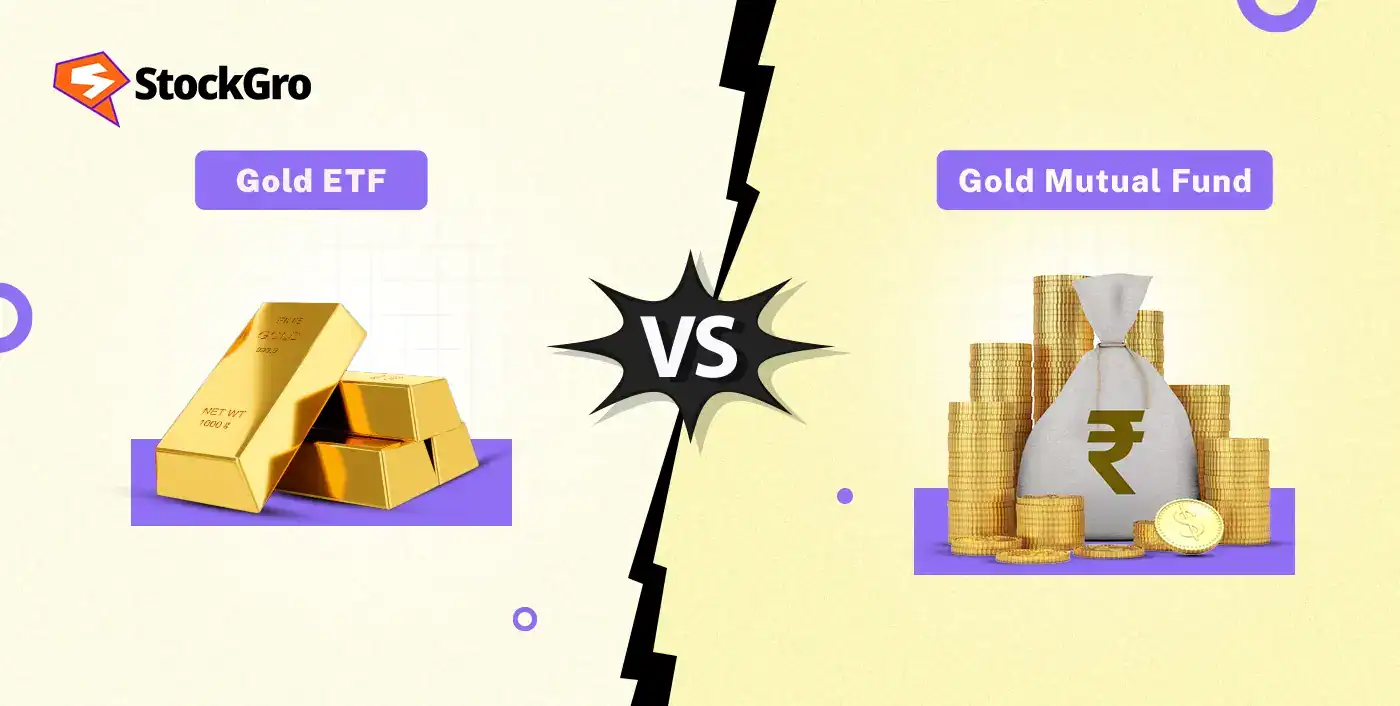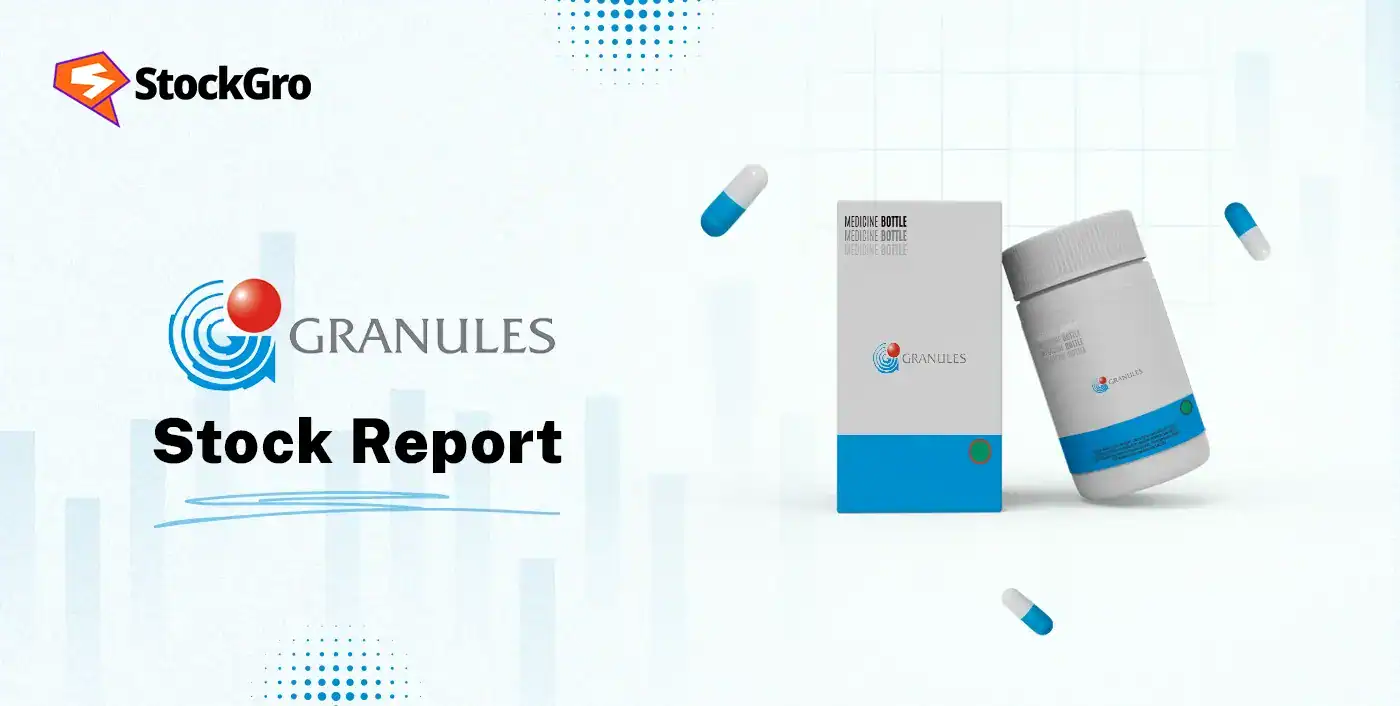
Gold has always been the go-to option for Indian investors – whether it’s weddings, festivals, or a long-term wealth protection goal. Indians and their love for gold never fade away. In October 2025, 24-carat gold reached a record price of roughly ₹1.3 lakh for every 10 grams in Delhi — a clear sign of how strongly Indians continue to rely on it.
In today’s world, the investor has alternatives to physical gold in jewellery and coins. He can invest digitally in Gold ETFs and Gold Mutual Funds.
So, which one’s better — a Gold ETF or a Gold Mutual Fund? In this article, let’s break it down in simple terms so you can pick the right option for your investment.
What Is a Gold ETF?
To understand Gold ETFs, we first need to understand ETFs. Exchange-Traded Funds(ETFs) track the performance of an underlying asset. Similarly, a Gold ETF tracks the performance of the underlying gold. One unit of ETFs represents one gram of 99.5% pure gold.
These ETFs are traded on a stock exchange, making them highly liquid in nature. A demat account is required for buying or selling these ETFs.
The benefits of Gold ETF are:
- High Liquidity, as they are traded on a stock exchange in real-time
- Lower costs as a lower expense ratio is charged, and no exit load has to be paid
- Transparent Pricing – Prices closely track real-time gold rates, ensuring fair value at every trade
What Is a Gold Mutual Fund?
Gold mutual funds are investment vehicles that invest money in 99.5% pure gold or gold-related assets to generate income. Usually, they invest in Gold ETFs, but there are thematic gold funds that invest in gold-related securities such as gold mining companies.
A demat account is not required- you can invest just like any other mutual fund.
The advantages of the Gold Mutual Fund are:
- Lower capital requirement– can start with an investment of ₹500
- User-friendly, as technical knowledge about markets is not required
- Convenience – Fund managers handle everything, and the investor has a passive role
Key Differences of Gold ETF vs Gold Mutual Funds
The key differences between Gold ETFs vs Gold Mutual Funds are given below:
| Feature | Gold ETF | Gold Mutual Fund |
| Where It Invests | Directly in physical gold | In Gold ETFs or other gold related securities |
| Demat Account | Demat account is required | No Demat is needed |
| Trading | Intraday trading on stock exchange | Bought or redeemed at NAV(Net Asset Value) |
| Minimum Investment | 1 gram equivalent | ₹500 via SIP |
| Liquidity | High (real-time exchange) | Moderate (redemption in 1-2 days) |
| Expense Ratio | 0.5–1% | 0.75–1.2% |
| SIP Option | Not available directly | Available |
| Ease of Access | Slightly technical and requires market knowledge | Beginner-friendly, easier to understand |
| Tracking Error | Lower as market corrects the error | Slightly higher (since it invests in ETFs) |
Cost Comparison: Expense Ratios & Loads
When it comes to cost, Gold ETFs are generally cheaper because they simply mirror gold prices without any active management involved. Their expense ratio is around 0.5%–0.7%.
Gold Mutual Funds have additional costs because they are managed by fund houses. Their expense ratio usually ranges between 0.75%–1.2%. Additionally, they may charge an exit load of 1-2% on early redemption(within a year).
If you’re seeking lower expenses and are comfortable with trading platforms, Gold ETFs are the way to go.
On the other hand, if you’re not looking to actively trade and prefer convenience, Gold Mutual Funds are the right choice for you.
Liquidity & Trading Mechanism
Gold ETFs are traded on a stock exchange with an intraday trading mechanism, which allows you to buy or sell anytime during the market hours. This makes them highly liquid and allows quick settlement.
Gold Mutual Funds, just like any other mutual fund, don’t have intraday liquidity-they are settled on the daily NAV. After buying or redeeming, they take 1 or 2 days for settlement.
In a crux, Gold ETFs are highly liquid with a fast trading mechanism, while Gold Mutual Funds are moderately liquid with a comparatively slower trading mechanism.
Minimum Investment & Accessibility
Gold mutual ETFs are hard to access as they require you to have a demat account and buy at least one gram of gold, which will cost ₹12,000-₹13,000 today.
On the other hand, Gold Mutual Funds allow easy access as anyone can start with an investment of mere ₹500 without any trading or a demat account.
Diversification & Investment Strategy
Both Gold ETFs and Gold Mutual Funds are good options for diversification. Both of them aim to mirror gold prices, but the strategy behind them and the control they offer are different.
Gold ETFs let you manage the trade yourself- you can enter or exit anytime during market hours as per your wish.
Gold Mutual Funds are passive in nature, as the fund managers are in charge of the trades, and the investor can only enter or exit based on the daily NAV.
If you like having control over your investments, ETFs are a better fit for you.
If you prefer convenience and want to avoid the hassle of active trading, Mutual Funds might suit you better.
Taxation & Holding Periods
Both Gold ETFs and Gold Mutual Funds are taxed at the same rates; the difference in their holding periods determines the tax rate applicable.
- For Short-Term Capital Gains (STCG):
- Gold ETF Units held for a period of 12 months or less are taxed at your applicable income tax slab rate.
- Gold Mutual Fund Units held for 24 months or less are taxed at your applicable income tax slab rate.
- For Long-Term Capital Gains (LTCG):
- Gold ETF: Gains on units held for more than 12 months are taxed at a flat rate of 12.5%, without indexation.
- Gold Mutual Fund: Gains on units held for more than 24 months are taxed at a flat rate of 12.5%, without indexation.
Who Should Choose Which?
1. For Beginners
If you’re just starting your investment journey, a Gold Mutual Fund is the easiest route. There is no requirement for a Demat account, and you can begin with small amounts of investment.
2. For Experienced Investors
Investors who already have market experience and want authority should go for Gold ETFs. They come with lower costs and give more control over when to buy or sell.
3. For Small Monthly Investors
If you like the discipline of monthly investing, you can invest in Gold Mutual Funds via SIP. It helps in accumulating gold over time without worrying about timing the market.
4. For Traders and Active Investors
If you enjoy monitoring markets and making quick decisions, Gold ETFs are the right fit as they are settled on an intraday basis with real-time buying and selling during market hours.
5. For Long-Term Wealth Builders
Both ETFs and Mutual Funds perform similarly over time since they track the same underlying asset — gold. So, you can choose any of the two options that suits you best.
Conclusion
At the end of the day, both Gold ETFs and Gold Mutual Funds are great methods for investing in gold without the trouble of storing physical metal. The right choice really depends on how you prefer to invest.
If you have a Demat account and are looking to actively trade, Gold ETFs offer lower costs, real-time trading, and high liquidity.
On the other hand, if you prefer convenience and don’t want to bother with Demat setups, Gold Mutual Funds fit perfectly for you.
In the long run, both ETFs and Mutual Funds will give you exposure to the same asset — gold — which has historically been generating returns while acting as a hedge against inflation and market volatility.
After all, the goal isn’t just to own gold — it’s to grow wealth smartly, with the right balance of convenience, cost, and control.
FAQs
Gold ETFs invest in 99.5% pure gold. They are traded on a stock exchange and thus require a demat account.
Gold mutual funds invest in Gold ETFs and other gold-related securities. They can be bought or sold just like any other mutual fund.
Only Gold ETFs require a demat account. Investments in Gold Mutual Funds can be made without a demat account.
Yes, you can invest in gold via SIP through a Gold Mutual Fund. Gold ETFs don’t offer direct SIPs.
Yes, Gold ETFs are less expensive than mutual funds as they have lower expense ratios and do not carry an exit load.
ETFs and Gold mutual funds are taxed at the same rate, but the difference is in their holding period. For long-term capital gains tax, Gold ETFs have to be held for more than 12 months, and Gold Mutual Funds have to be held for more than 24 months.
Gold ETFs are more liquid as they are traded on exchanges in real time.
If you like control and lower costs, choose the Gold ETF. If you like easy investing, choose the Gold Mutual Fund.

